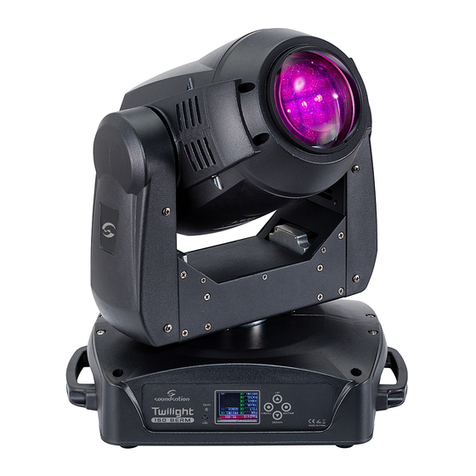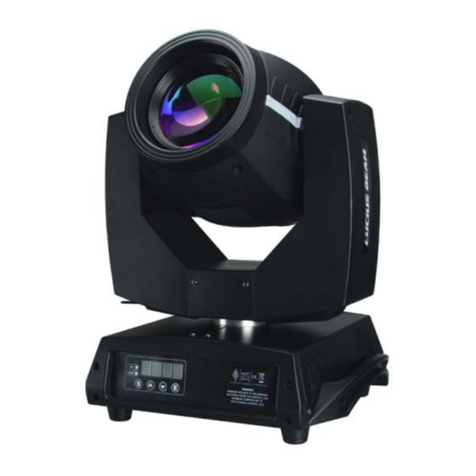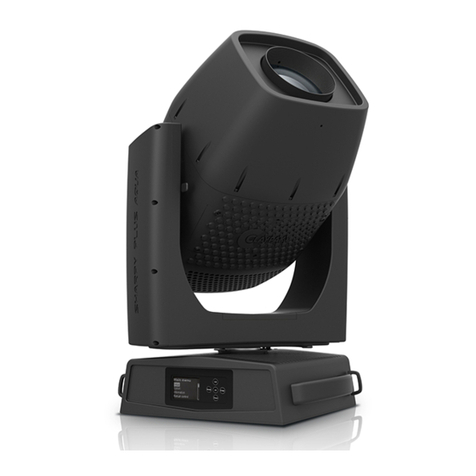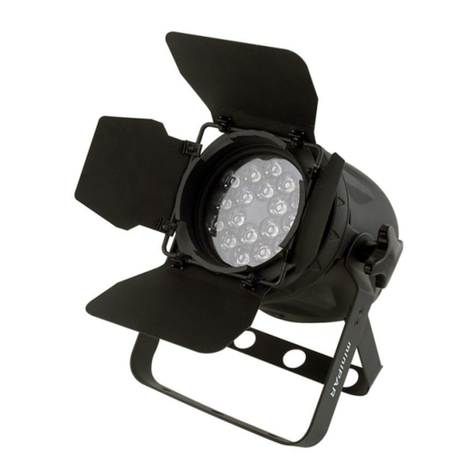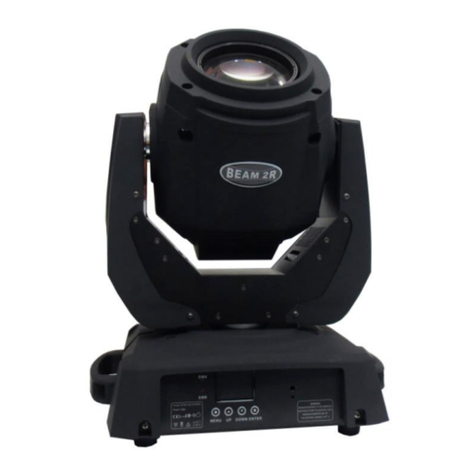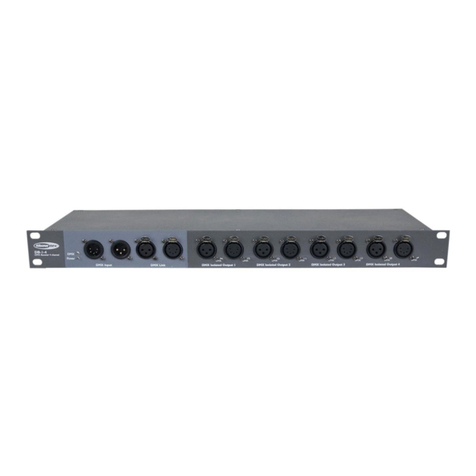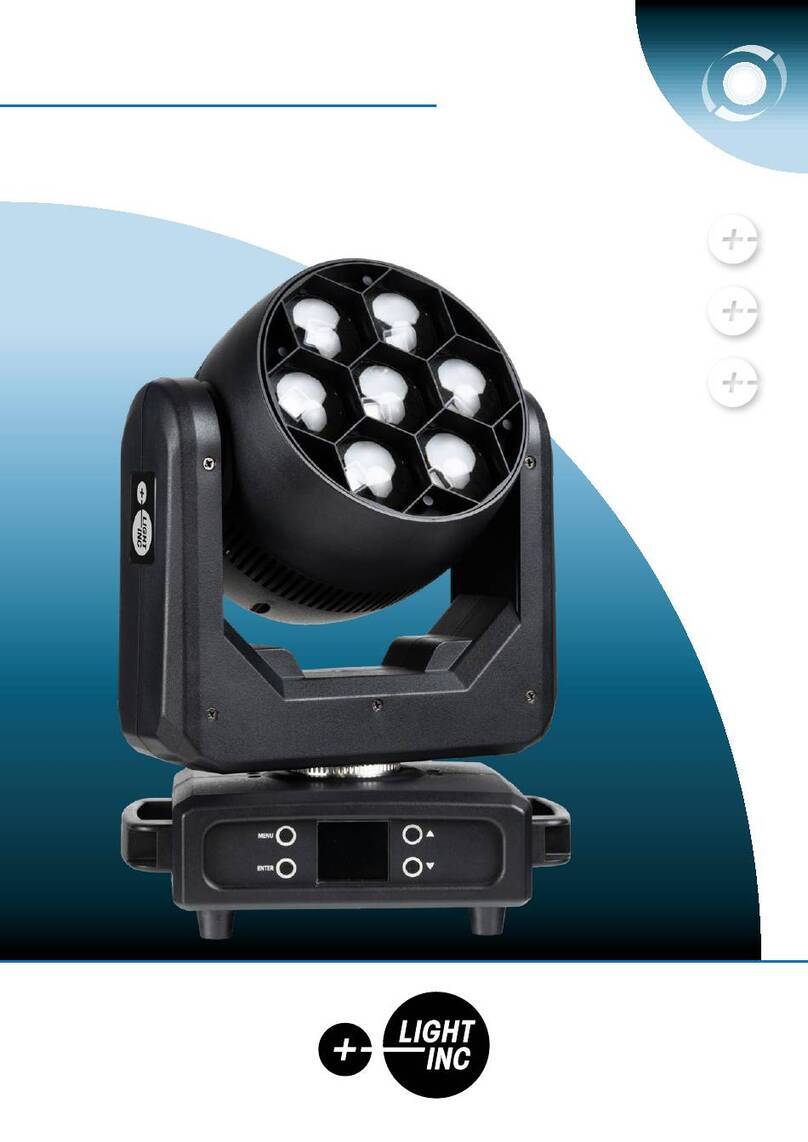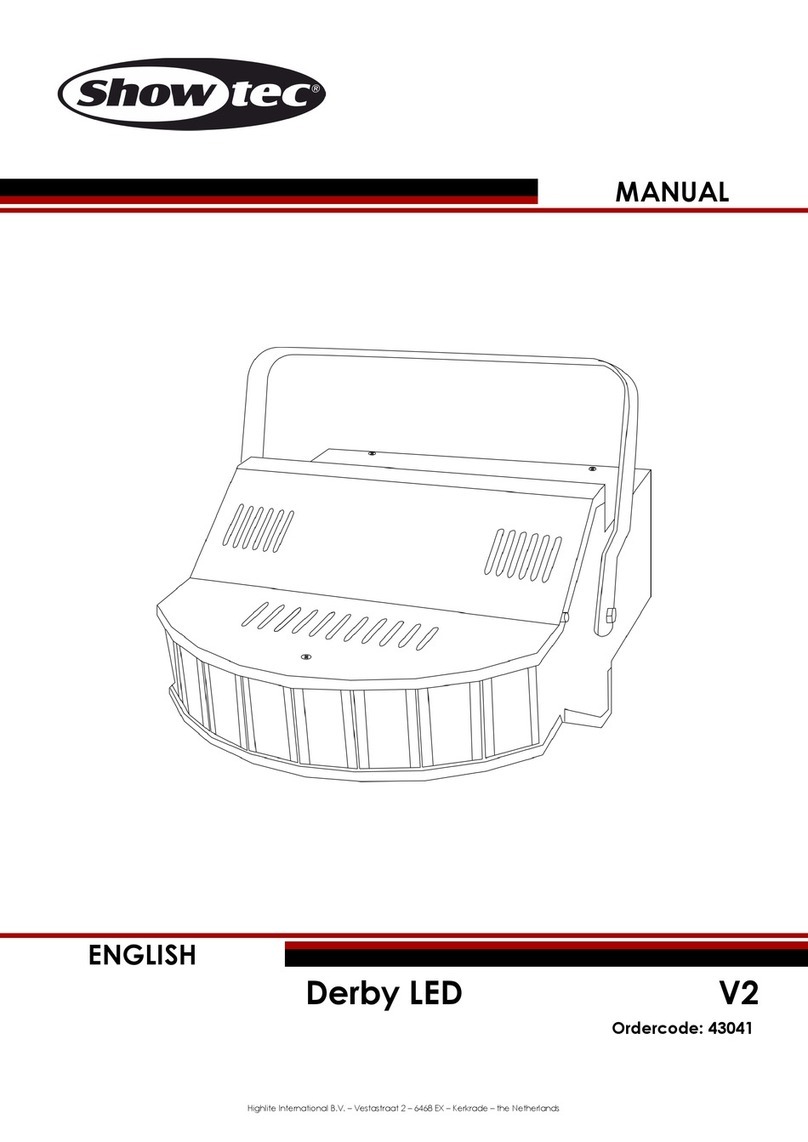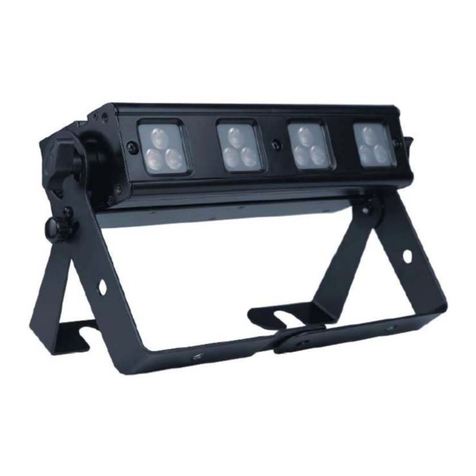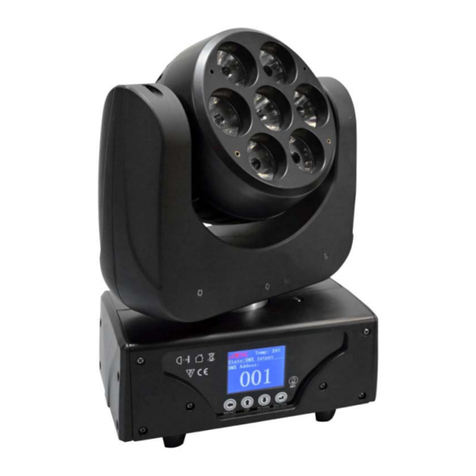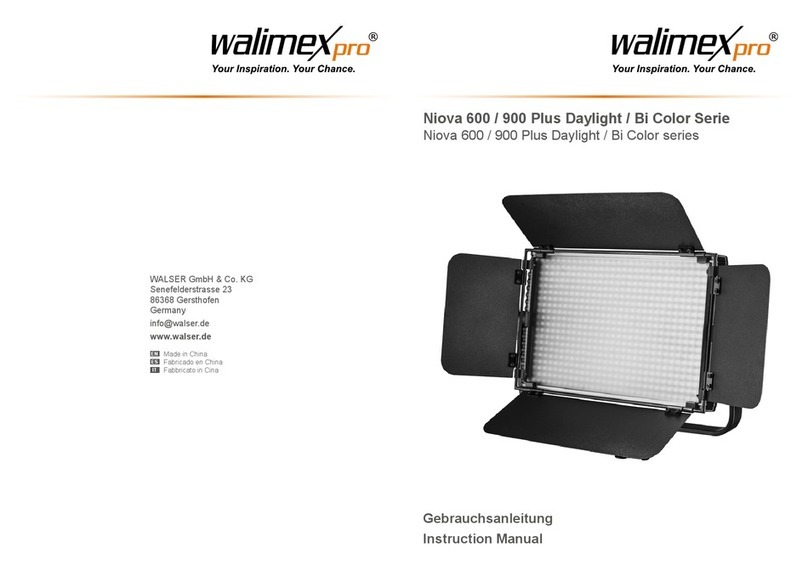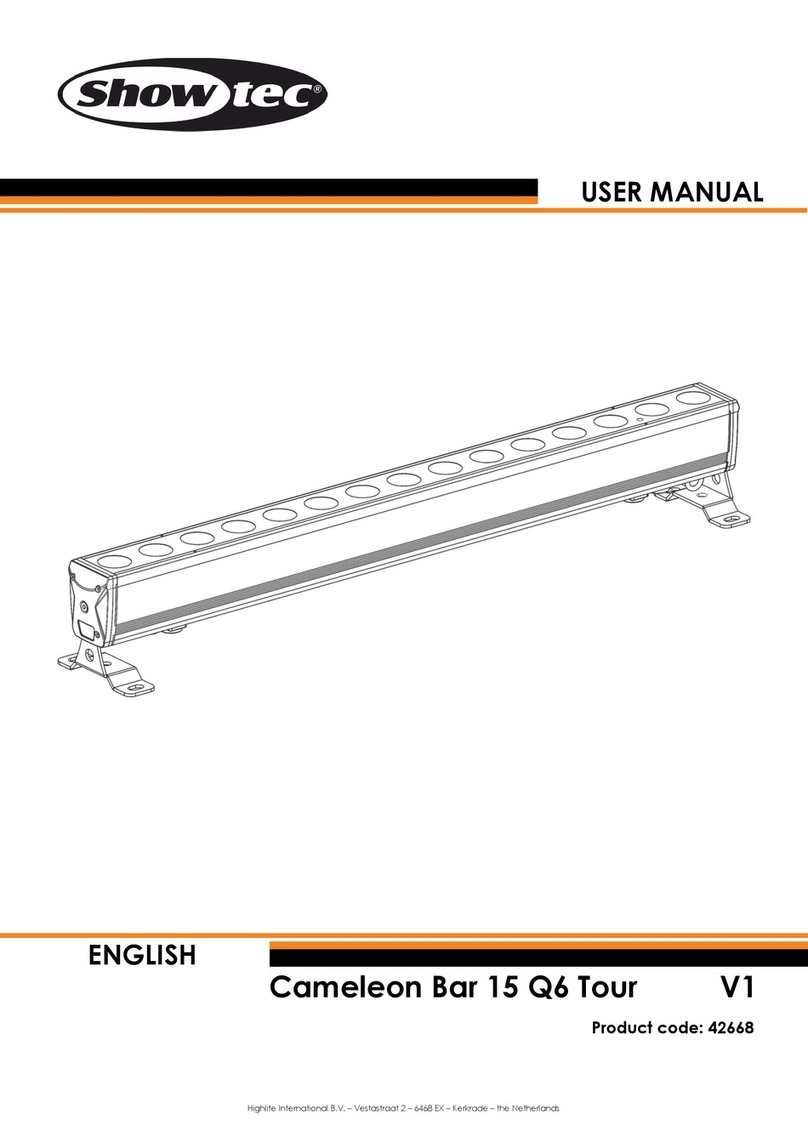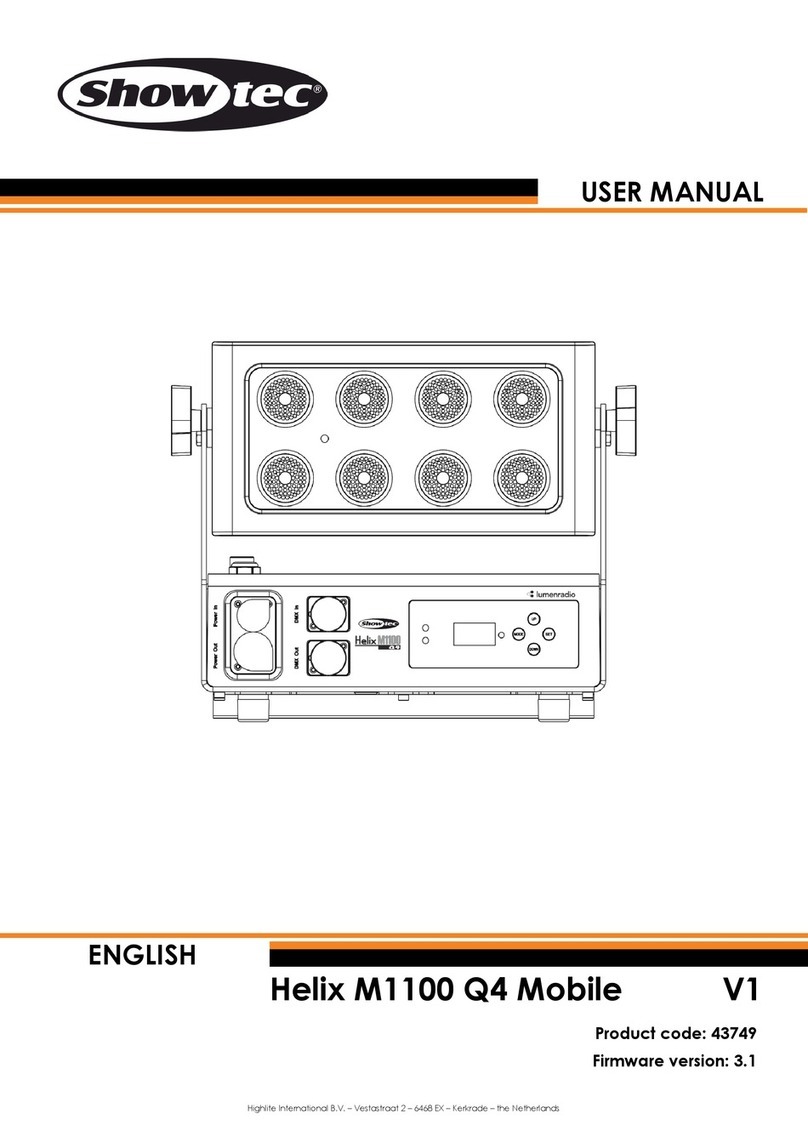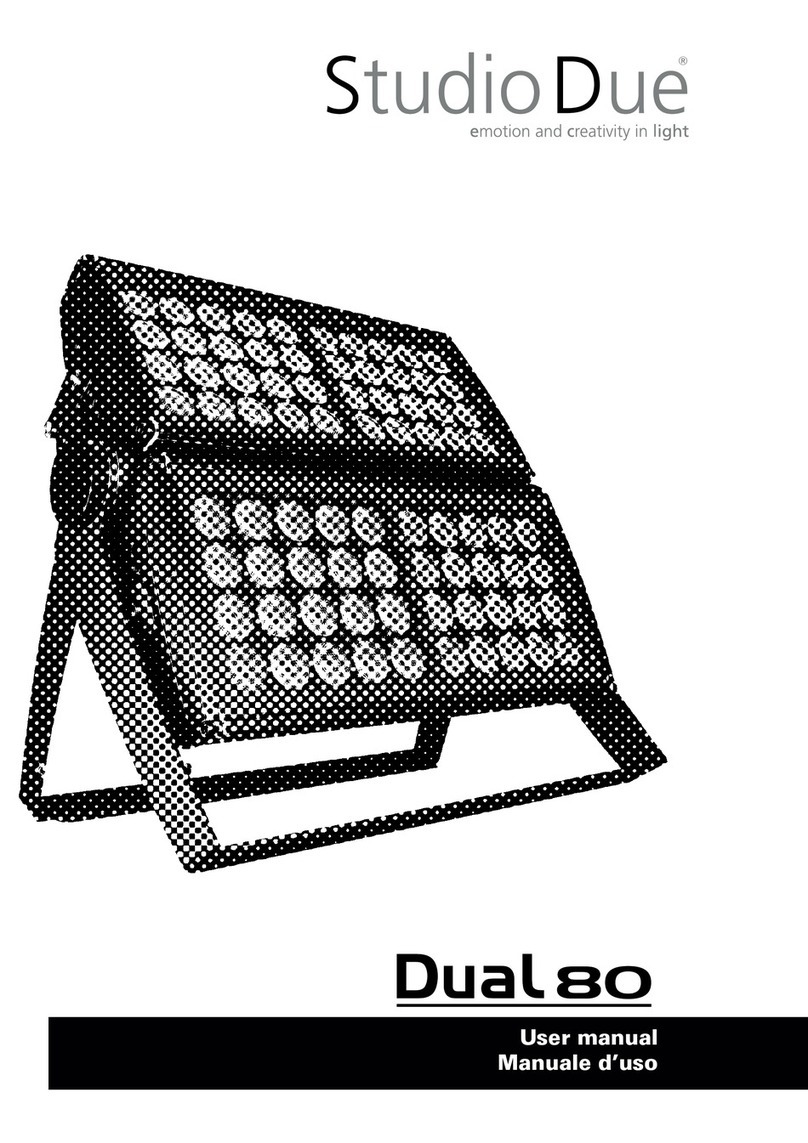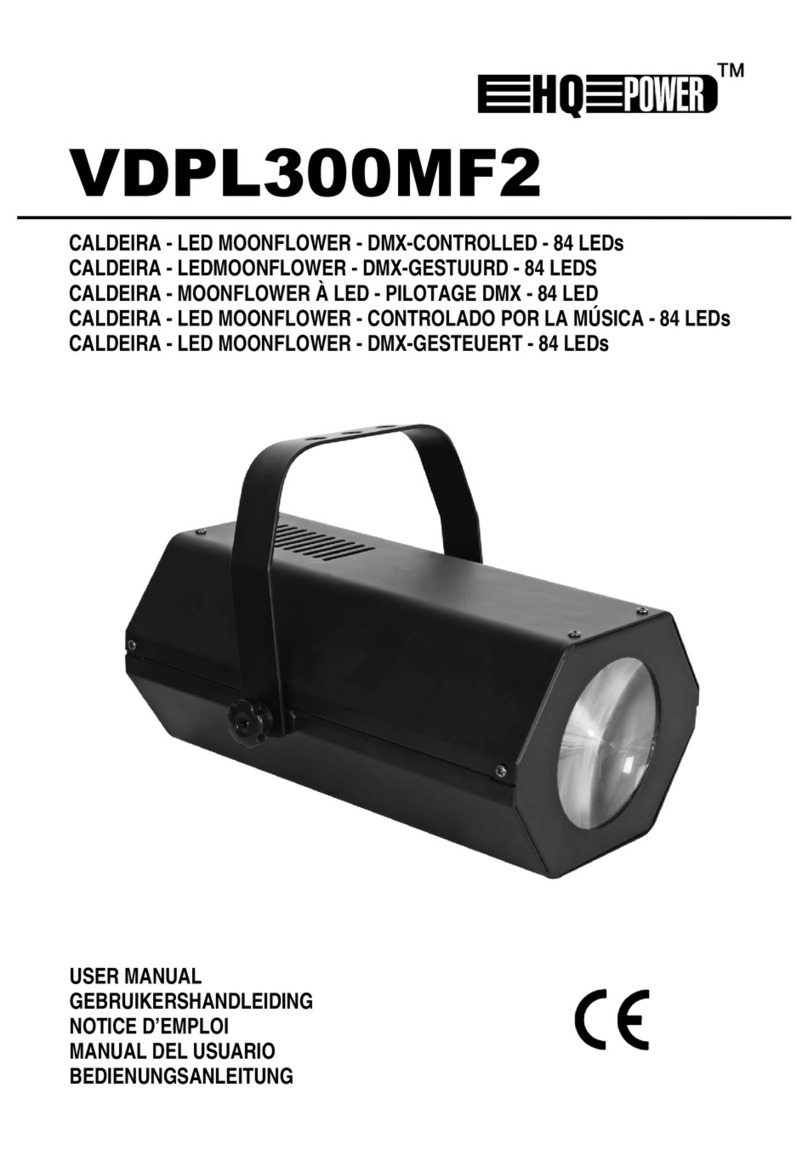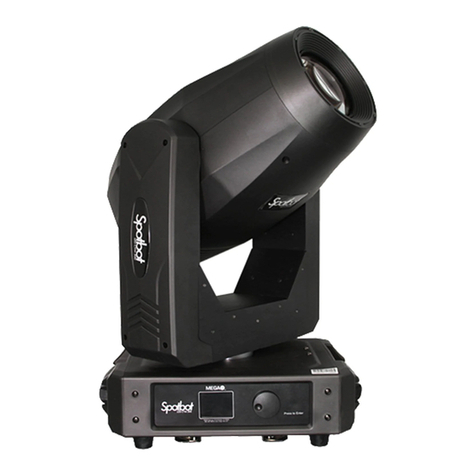Sufag Eco User manual

SUFAG AB
Nifsåsvägen 11
83152 Östersund, SWEDEN
T: +46 (63) 577750
www.sufag.com
Snowmaker
Access
Eco
Peak
Power
Super Silent
Operating Manual
Version 02/2015

____________________________________________________________________________________
Operating Manual access/eco/peak/power/silent Page
2
C
OPYRIGHT
All parts of this documentation and the herein described devices are subject to copyright.
This documentation may not be copied, reproduced, translated into another language, be
handed to third parties or recorded on an electronic medium.
The contents of this user manual as well as the herein described devices may be subject
to change without a preliminary notification.
© Copyright SUFAG
AB
Nifsåsvägen 11
SE-83152 Östersund
Version 02/2015
24.02.2015
File Snowmakers_OP_15_E.doc

____________________________________________________________________________________
Operating Manual access/eco/peak/power/silent Page
3
S
AFETY FOR
H
ANDLING OF
S
NOWMAKERS
Safety instructions for the electrical system:
Dangerous electric voltages may exist within electrical power or control lines which
can cause lethal accidents. In addition to generally applicable basic regulations, the
following rules must be observed for any servicing or maintenance work:
•Regularly check the power connection visually (connecting cables and plugs). In
case of visible damages, these parts must be replaced immediately.
•Always disconnect the supply mains from the snowmaker before starting any
service or maintenance works and secure it against inadvertent switching on.
•In case of malfunctions call in an expert. Problems resulting either from
malfunctions of the machine or within the installation must be solved before
operating the snowmaker again.
•Except for normal maintenance works, such as checking the connections and
the cables,all modifications or replacements on the electric control system must
be done by qualified personnel only.
Safety regulations for the hydraulic system:
The operating pressure of the snowmaker is maximum 40 bar. These pressures
involve high forces which may cause injury in case of defects. When connecting
the machine with the pressure water pipe, the following must be observed:
•Use only hoses and couplings rated for this operating pressure. Ordinary fire
hoses are not suitable for snowmaking installations.
•As with the cables, the hoses and couplings should also be checked regularly in
order to eliminate defective parts immediately. Since modern hoses are double-
plied, even a hose which is still leak-proof on the outside may be defective.
•Defective hoses should only be repaired by a company which is specialized in
this field and experienced with hoses of this pressure rating. During operation, a
force of up to 800 kg is applied where the hose is connected to the coupling,
therefore appropriate know-how is required for casing the coupling.
•Never try to open up a frozen hose with pressure water. The accumulation of ice
in the hose could cause damage to the snowmaker (valve block, water filter,
etc.).
•Never apply pressure to a hose which is connected at one end only. Pressure
thrusts can cause highly radial forces which may result in injury.
•Always roll up hoses for transport and put them on the floor of the vehicle –
never drag hoses behind a groomer (snowcat) or a ski-doo.

____________________________________________________________________________________
Operating Manual access/eco/peak/power/silent Page
4
S
AFETY FOR
H
ANDLING OF
S
NOWMAKERS
Additional safety instructions:
•A snowmaking installation may not be operated by one person alone. In case of
an accident, another person must be available to organize rescue or recovery.
•Wear functional clothing and avoid loose ribbons, scarves, etc. Such parts can
easily enter into the suction area of the fan and cause injury.
•Protect your eyes in case you remove ice from the nozzle ring or from suction-
protective grating of the fan.
•Place the machine in an area as level as possible, in order to ease the handling.
Pay attention to the maximum incline, in the extreme case the snowmaker can
tip over.
•For machines on tripods, extend the supporting feet
before placing them in the terrain. In the terrain, align the
base frame with the supporting feet horizontally.
Attention! There are only 2 positions:
TRANSPORT POSITION = supporting feet retracted,
SNOWING POSITION = supporting feet extended.
The bolt has to be plugged and secured again.
•For machines on wheels, extend the wheels before
placing them in the terrain. For transport with the carrying device the
snowmaker must be additionally secured with a chain to the blade of the
groomer. Secure the machine in the terrain with fixing jacks.
Protection of other persons:
Besides your own protection during the operation of the snowmaker, you should
also consider the protection of your guests:
•Transport the snowmaker only with vehicles appropriate for such purpose.
Before each transport, check the trailing device of the trailing vehicle as well as
the trailer coupling of the snowmaker. Ensure the proper function of the safety
catch at the trailing device. Additionally secure the machine with a chain during
transport.
•When placing the machine, make sure that it is visible for the skiers from a safe
distance. Consider the placement not only while the machine is operating but
also during standstill periods.
•Make sure that both the area around the machine and the area of the power and
water supply are safe during skiing time.
•Make sure that hoses and cables are not lying on the slope when skiers pass.
When crossed by the steel edges of the skis,they will inevitably be damaged.

____________________________________________________________________________________
Operating Manual access/eco/peak/power/silent Page
5
C
ONTENTS
1 Description of the snowmaker
1.1 Construction and mode of operation 6
1.2 Technical data and performance characteristics 7
1.3. Weights and dimensions 9
2 Operation
2.1. Placement of snowmaker 10
2.2. Water connection 10
2.3. Power connection 10
2.4. Startup of snowmaker 11
2.5. Changing the water flow rate 12
2.6. Switching off the snowmaker 14
2.7. Continuous operation 14
2.8. Alarm device 15
2.9. Automatic swivel mechanism 15
2.10. Automatic system 15
2.11. Soft starter function – fan motor 15
3 Maintenance
3.1. Summer service 17
3.2. Compressor 17
3.3. Nozzle ring 17
3.4. Water filter 17
3.5. Pressure regulation nucleator 18
3.6. Electric part 19
4 Defects - Causes – Solutions
4.1. Tripped motor protection for fan 20
4.2. Tripped motor protection for compressor 20
4.3. Tripped breaker for heating 20
4.4. Tripped breaker for transformer 21
4.5. Tripped breaker for socket 21
5 Tips for snowmaking 22
6 Elements of control box 23

____________________________________________________________________________________
Operating Manual access/eco/peak/power/silent Page
6
1
D
ESCRIPTION OF THE
S
NOWMAKER
1.1. Construction and mode of operation:
The SUFAG
®
Snowmaker sprays a fine mixture of water and air via a nozzle ring
into the jet of a low pressure fan. Under adequate weather conditions, this water-
air-mixture crystallizes into tiny snow crystals until it reaches the ground.
Because of the sensitive regulation of the water flow and an optimized geometry of
the nozzle ring, the machine works from the absolute marginal/limiting temperature
range to the low temperature range with high efficiency and outstanding snow
quality.
The compressed-air compressor is found under the hinged or detachable cover
The water supply enters through a swivel joint under the water distributor. Via the
water filter and the switch-over valves the water enters into the nozzle ring. The
machine drains by itself after the switch-off. You find the electric box lateral to the
piling.
The parts sensitive to frost are protected against formation of ice by electric
heating.
The fan can be swivelled up as well as horizontally.

____________________________________________________________________________________
Operating Manual access/eco/peak/power/silent Page
7
1
D
ESCRIPTION OF THE
S
NOWMAKER
The construction of the base of the snowmaker is variable. The following
constructions are available:
•Tripod
•3-Wheel chassis
•Uniaxial wheel chassis
•Tower
•Gunlifter
•Swivel arm
1.2. Technical data and performance characteristics:
Eco
Super Silent
Peak
Power Access Super Access
Number of
nozzles 310 pc. 355 pc. 355 pc.
32 or 300 pcs
32 or 300 pcs
Nucleation
nozzles 45 pc. 45 pc. 45 pc.
20 pcs
20 pcs
Rotation
speed of fan
1450 min
-1
1450 min
-1
2900 min
-1
1450 min
-1
1450 min
-1
Power of fan
11,0 kW 15 kW 18,5 kW
9 kW
15 kW
Power of
compressor 4 kW 4 kW 4 kW 4 kW
4 kW
5,5 kW
Power of
heating 4,2 kW 4,2 kW 4,2 kW
4,2 kW
4,2 kW
Total
connected
load 19,5 kW 23,5 kW 27 kW
18,5 kW
24,5 kW
Water
pressure 8 to 40 bar 8 to 40 bar 8 to 40 bar 8 to 40 bar 8 to 40 bar
Water flow
rate 41 to 425 l/min
50 to 639 l/min
50 to 639 l/min
60 to 610 l/min
60 to 610 l/min
Wate
r flow rate
P
ower
/
P
eak
0,0
100,0
200,0
300,0
400,0
500,0
600,0
700,0
5 10 15 20
25 30 35 40
Water pressure (bar)
Water flow rate (l/min)
ring 1
ring 2
ring 1+2
ring 2+3
ring 1+2+3
ring 2+3+4
ring 1+2+3+4

____________________________________________________________________________________
Operating Manual access/eco/peak/power/silent Page
8
1
D
ESCRIPTION OF THE
S
NOWMAKER
Water flow rate
E
co /
S
u
per
S
ilent
0,0
50,0
100,0
150,0
200,0
250,0
300,0
350,0
400,0
450,0
5 10 15 20 25 30 35 40
Water pressure (bar)
Water flow rate (l/min)
ring 2
ring 1+2
ring 2+3
ring 1+2+3
ring 2+3+4
ring1+2+3+4

____________________________________________________________________________________
Operating Manual access/eco/peak/power/silent Page
9
1
D
ESCRIPTION OF THE
S
NOWMAKER
1.3. Dimensions and weights:
Tripod Wheels
Length (cm) 260 274
Width (cm) 215 215
Height (cm) 187 190
Weight access (kg) 678 773
Weight eco (kg) 650 760
Weight peak (kg) 735 845
Weight peak silent (kg) 755 865
Weight power (kg) 680 790
Weight super access (kg) 718 813
Weight super silent (kg) 670 780

____________________________________________________________________________________
Operating Manual access/eco/peak/power/silent Page
10
2 O
PERATION
2.1. Placement of snowmaker:
It is advisable to put the snowmaker in an area which is as level as possible.
After the snowmaker is placed, it is fastened safely on the ground by the locking
jacks.
When transporting the snowmaker make sure that the horizontal swivel mechanism
is well fixed and cannot move by itself anymore.
For the wheel chassis and the construction on tripod with carrying device there is
the possibility to increase the width of the trail to 280 mm (at each side 140 mm)
According to the nature of the terrain this must be done before putting the machine
on the piste. Also take care of the maximum tyre pressure. If no other description
is on the tyre, there will be a maximum pressure of 2,7 bar.
When transporting the machine on a tripod, we recommend rotating the front leg to
90°. See the picture below.
When transporting the machine, pay attention to the general security
regulations.
2.2. Water connection:
For the water connection there is a central turnable adapter with 2“ quick coupling
at the snowmaker.
The snowmaker is connected to the tapping station by a 2“ hose. For granting easy
handling, this hose should not be longer than 20m. In case of longer distance to the
tapping station, several hoses are used.
We recommend the approved snowmaking hose from SUFAG
®
.
2.3. Power connection:
IMPORTANT:
Check all electrical power connections inside the cabinet before taking the
snowmaker in use for the first time - they might have become loose during
transport. Check and tighten may only be done by authorized personnel.
The supply voltage of the snowmaker is 3x400/230 VAC (3L+N+PE) with a
tolerance of +5%/-10%. Therefore the admissible tension during operation ranges
from 378 VAC to 420 VAC.

____________________________________________________________________________________
Operating Manual access/eco/peak/power/silent Page
11
2
O
PERATION
The machines are equipped in series with a 20 m long supply cable with a 5-pole
CEE- plug with nominal current 63 A.
The maximum distance between the snowmaker and the electrant depends on the
voltage in the general power supply and voltage loss in the power cables taken in
consideration. See the power requirements.
Use only flexible cables which are suitable for this temperature range. In any case
secure the cable against sliding off at the pull relief on the piling.
Normally the supply is for 5-poles (3L+N+PE).
Check the SENSE OF ROTATION at the fan. It must be in the direction of the
arrow. If not, exchange 2 phases in the supply.
Pay attention that all tapping stations are equipped with the same sense of rotation
and that the phases are not crossed for the connecting cables.
2.4. Startup of the snowmaker:
1. Always secure the snowmaker to the ground with the locking jacks.
2. Switch on the power. Then the heating for the valve block is automatically in
operation.
3. Switch on the heating for the nozzle ring. If needed also turn on the light.
4. Connect the water supply.
5. After the pre-heating time (approx. 10-30 min.), switch on the compressor.
Check the pressure by reading it at the pressure gauge (maximum 2 to 4 bar
without water).
Too high pressure indicates that a part of the nozzles is still blocked with ice.
Switch off the compressor, turn on the heating and repeat the operation after 2
to 3 minutes.
6. Switch on the fan.
IMPORTANT:
Do not turn on the fan if the ice or snow is blocking the fan or if ice can fall into
the fan.

____________________________________________________________________________________
Operating Manual access/eco/peak/power/silent Page
12
2
O
PERATION
7. Supply with water (open the hydrant slowly)
8. Regulate the water flow rate. By the position of the magnetic valves and the
incoming pressure, the water flow rate is adjusted to the value accommodated
to the environmental conditions.
Water pressure minimum 8 bar
Water pressure maximum 40 bar
2.5. Changing the water flow rate:
The water flow rate must be adjusted according to the climatic conditions. Since
the adjustment of the water flow rate depends on a host of parameters, it is difficult
to specify generally applicable data with respect to the switching points between
the individual stages.
Some of the factors influencing the possible water flow rate are:
•Air temperature and relative air humidity
•Ground temperature (snow temperature)
•Water temperature and water quality
•Wind
•Incline of piste and setting angle of the machine
•Desired snow quality (specific gravity)
The water flow rate is adjusted by 2 means of control.
•Electric On-Off valves, switching the nozzle rows on and off
•Water pressure 8 bar - 40 bar
The nozzle ring is equipped with 4 rings of nozzles, with the Nucleators (N - outer)
always on. The rings with the water nozzles ring 1 – ring 4 are either fixed open
(ring 2 for Eco) or switchable with magnet valves.
With the switches 1.R / 2.R / 3.R / 4.R on the electric control box the magnet valves
fort he according nozzle rings are actuated.

____________________________________________________________________________________
Operating Manual access/eco/peak/power/silent Page
13
2
O
PERATION
Ring
Access
Super Access
E
co
Super Silent
P
ower
Peak
N 20 nozzles fix 20 nozzles fix 45 nozzles fix 45 nozzles fix
0,5.R 31 nozzles BV 5 nozzles BV x x
1.R 44 nozzles MV 3 nozzles MV 45 nozzles MV
45 nozzles MV
2.R 75 nozzles MV 8 nozzles MV 45 nozzles fix 90 nozzles MV
3.R 75 nozzles MV 8 nozzles MV 90 nozzles MV
90 nozzles MV
4.R 75 nozzles MV 8 nozzles MV 90 nozzles MV
90 nozzles MV
With the shown combinations of nozzle rings and an operating pressure between 8
bar and 40 bar you can have the following water flows:
1.R 2.R 3.R 4.R 266 nozzles
E
co
Super Silent
Ring 2 (always on) 41 – 80 l/min
Ring 1+2 72 – 149 l/min
Ring 2+3 104 – 219 l/min
Ring 1+2+3 134 – 288 l/min
Ring 2+3+4 166 – 358 l/min
Ring 1+2+3+4 196 – 426 l/min
0.5 R + 1.R together form the first ring of nozzles.
0,5.R
1.R 2.R 3.R 4.R 310 nozzles
P
ower
Peak
Ring 1 50 – 100 l/min
Ring 2 90 – 190 l/min
Ring 1+2 131 – 279 l/min
Ring 2+3 171 – 369 l/min
Ring 1+2+3 211 – 459 l/min
Ring 2+3+4 251 – 549 l/min
Ring 1+2+3+4 291 – 639 l/min
1.R 2.R 3.R 4.R 300 nozzles
A
c
cess
Super Access
½
Ring 1 (always on)
60 – 90 l/min
Ring 2 85 – 125 l/min
Ring 1+2 120 – 170 l/min
Ring 2+3 160 – 210 l/min
Ring 1+2+3 195 – 275 l/min
Ring 2+3+4 260 – 305 l/min
Ring 1+2+3+4 290 – 520 l/min

____________________________________________________________________________________
Operating Manual access/eco/peak/power/silent Page
14
2
O
PERATION
1.R 2.R 3.R 4.R 32 NOZZLES
A
c
cess
Super Access
½
Ring 1 (always on)
50 – 70 l/min
Ring 1 65 – 105 l/min
Ring 2 95 – 145 l/min
Ring 1+2 130 – 185 l/min
Ring 1+2+3 170 – 215 l/min
Ring 1+2+3+4 250 – 450 l/min
The water pressure is adjusted manually at the hydrant. The nucleation row is
equipped with an automatic pressure regulating valve; the other rows are admitted
with the incoming pressure.
2.6. Switching off the snowmaker:
1. Turn off the water supply at the hydrant and disconnect the hose for water
supply from the snowmaker.
2. When no more water comes out of the nozzle ring, switch off the compressor
and the fan.
3. Switch off the heating
4. Check oil level at the compressor and refill if necessary.
ATTENTION! When relocating the snowmaker, don’t forget to raise the jacks after
attaching the snowmaker.
2.7. Continuous operation:
Of course the snowmaking direction of the snowmaker must be changed from time
to time in order to assure a constant distribution of the snow on the slope.
With the optional equipment automatic swivel mechanism, snow can be made on
a larger surface (see chapter 2.9.).
Under normal operating conditions the oil level at the compressor should be
checked approx. every 10 hours; if necessary refill with oil. On extremely steep
slopes the oil consumption may be a little bit higher.
ATTENTION! Use M O B I L RARUS SHC 1024 or equivalent oil only!
Be sure not to fill in too much oil – this can cause damage of the compressor.

____________________________________________________________________________________
Operating Manual access/eco/peak/power/silent Page
15
2
O
PERATION
2.8. Alarm device:
The machine is standardly equipped with an alarm device which will indicate any
fault at the snowmaker.
With the alarm device the motor protection switches for fan and the compressor
motor are monitored. At the water separator, there is a pressure switch for
monitoring the air pressure. The air pressure necessary for operation is only
reached by the corresponding counterpressure of the water. Herewith the alarm
device is also activated in case of problems with the water supply (lacking water
pressure or defective hose).
Faults will be signalled by a flash light.
Make sure that the flash light is activated when starting the snowmaker (because of
too low air pressure), but under normal function it may not be activated.
2.9. Automatic swivel mechanism:
The actuation is made via a gear motor which activates the rotating assembly, on
which the machine is mounted, by means of a cogwheel.
The drive is mounted in a floating position and can be declutched for manual
function. Herewith the machine may be brought into the desired position without
power supply (e.g. for transport of the snowmaker).
The swivelling angle is monitored by a counting wheel at the gear motor by means
of a proximity switch. The desired swivelling angle can be reset with 10°, 16°, 24°,
30°, 38°, 44°, 52° and 60° via a switch with 8 positions.
For automatic machines, the control of the swivel mechanism is made via the
automatic control unit STF. The swivelling angle can directly be registered in ° on
the keyboard.
2.10. Automatic system:
All SUFAG
®
snowmakers are available with an automatic control for fully automatic
function.
The configuration and the mode of operation of the automatic system STF are
described in a separate operating manual.
2.11. Soft starter function - fan motor:
SUFAG
®
snowmakers are, depending on the modell, either equipped with Y-D or
a soft starter function of the fan motor.
Motor protection settings:
9 kW fan motor 18A
5 kW fan motor 30A
If an error occurs, the LED-lamp flashes up to 7 times in a row depending on the
cause - see LED-status on the drawing below

____________________________________________________________________________________
Operating Manual access/eco/peak/power/silent Page
16
2
O
PERATION
DO NOT CHANGE dip switch settings.

____________________________________________________________________________________
Operating Manual access/eco/peak/power/silent Page
17
3
M
AINTENANCE
The SUFAG
®
low pressure snowmakers are almost maintenance-free. However,you
should observe the following short remarks.
3.1. Summer service:
We recommend conducting a revision of the snowmaker after every snow season,
directly before storing the machines during summer time. Enclosed you will find a
check list for the work to be done.
3.2. Compressor:
The time to make the first oil change after 50 operating hours must be strictly
observed. Later oil changes should be done after the season or after 500 operating
hours.
Oil quality: MOBIL RARUS SHC 1024 or equivalent oil only
3.3. Nozzle ring:
Despite pre-filtered water, it may happen that one of the tiny atomizing-nozzles
gets stopped up. With the help of the added tools, the nozzles can easily be
unscrewed for cleaning.
Correctly spraying nozzles are a condition for trouble-free operation of the
snowmaker. Stopped-up nozzles lead to an icing on the nozzle ring.
3.4. Water filter:
To avoid strong soiling of the filter we recommend, as well as a protection for the
high pressure centrifugal pump (pumping station), the installation of a water filter in
the pumping house, unless the water supply is provided directly from the mains.
The cleaning intervals of the filter depend on the degree of pollution of the water.
Particularly for new snowmaking installations the filter should be checked more
frequently on account of dirt accumulated in the pipes throughout installation work.
Flush pipes and system carefully before use.
The filter insert is taken out and cleaned carefully in hot water and soft soap. Use
a brush if necessary. DO NOT USE STRONG WATER JET!

____________________________________________________________________________________
Operating Manual access/eco/peak/power/silent Page
18
3 M
AINTENANCE
3.5. Pressure regulation nucleator:
The pressure regulator for the water supply is pre-set from the factory.
In case the pressure regulation does not function, that means that nucleation water
comes with a too high pressure and the security valve of the compressor is
activated, the mobility of the valve must be checked.
For Power/Eco/Super Silent 7,0 bar
For Peak/Access/Super Access 4,5 bar
Proceed as follows:
•The pressure regulating valve for the nucleation water is mounted directly on the
valve block. After taking off the back cover of the machine you can reach the
valve block.
•Now you can reach the regulating screw of the pressure regulating valve.
Turning it clockwise increases the pressure, counter-clockwise the nucleation
pressure falls.
•Check the pressure change at the pressure gauge in the air duct. For adjusting
the valve, let the snowmaker run with row 1 and 2 (nucleation row and one
water row) with approx. 20 bar water pressure at the input of the snowmaker.
•Regulate the pressure of the nucleation water to 4,5 / 7.0 bar by turning the
regulating screw. Then fix the screw after the adjustment with the counternut.
If the pressure doesn’t change please proceed as follows:
•Mark the regulating screw for the regulation of the spring resistance of the
regulating valve, then unscrew the screw until the spring is completely free.
•Open the cap of the valve and take out the spring plate and the pressure spring.
•Take off the piston for regulation and adjustment by turning and pulling with a
flat wrench SW10. Check to make sure the piston holds well. Also check if both
o-rings are possibly damaged and clean possible contaminations.
•Grease the track of the o-rings with waterproof grease and assemble the pieces
again in reverse order.
•Regulate the pressure of the nucleation water at 4,5 / 7,0 bar as described
above.
The piston is sealed by 2 o-rings to avoid having the spring chamber filled with
water.
Disassemble the valve as described above, change both o-rings and remount the
valve again. Before assembling, check that the border of the boring along the
piston track contains no burr.

____________________________________________________________________________________
Operating Manual access/eco/peak/power/silent Page
19
3
M
AINTENANCE
3.6. Electric part:
Please perform maintenance work for all electrical equipment once a year.
•Check electric connections for fit (tighten attachment screws).
•Visual control of the electric lines.
•Check screwed cable glands for fit (leak tightness of the electric box).
•The Emergency Stop push-button must be pressed once a month. If the switch
does not release or if it can’t be switched on again, there is damage and it must
be repaired immediately.
Adjustments (motor protection switch, time lag relay) may not be changed!
Electrical work is only to be made by authorized personnel.

____________________________________________________________________________________
Operating Manual access/eco/peak/power/silent Page
20
4
D
EFECTS -
C
AUSES -
S
OLUTIONS
4.1. Tripped motor protection for fan: F1
Possible reasons:
Increase of current consumption, caused by undervoltage, a too strong
decrease in voltage (minimum operation voltage 360 VAC), defective
change-over relay star-delta or phase failure.
Let the voltage at the entry terminals be checked by experts! The loss of
voltage is calculated from the cable length, the conductive material, the
conduction cross section and the load (current consumption). Therefore the
real loss of voltage can only be measured when all machines are in
operation.
Blocking of the fan protection grating by ice also leads to an increased
current consumption.
Solution:
Remove cause of the failure, switch off the fan, press the reset button of the
motor protection switch F1 (fan) again and restart the machine.
4.2. Tripped motor protection for compressor: F2
Possible reasons:
Increase of current consumption caused by under voltage, a too strong
decrease in voltage (minimum operation voltage 360 VAC), phase failure,
overpressure or mechanical damage.
Solution:
After elimination of the failure press the reset button of the motor protection
switch F2 (compressor) and start the machine again.
Warning: the motor protection switches should not be pressed repeatedly within a
short time, without having eliminated the source of the failure, as this consequently
leads to a BURN OUT of the motor windings.
4.3. Tripped breaker for heating: F4 and Q1 resp. F3 and Q1 for Compact-Peak
Possible reasons:
Defective heating caused by short circuit (automatic cutout F4 resp. F3) or
accidental ground (leakage current relay Q1).
For locating the defect, switch off each heating step by step (nozzle ring
heating 1, nozzle ring heating 2, valve block heating above, valve block
heating below).
The nozzle ring heating is wired via disconnect terminals; in the electric box
this heating can be taken off the power supply system by opening the
terminals. The valve block heating is connected in the terminal box at the
upper side of the valve block.
This manual suits for next models
5
Table of contents
